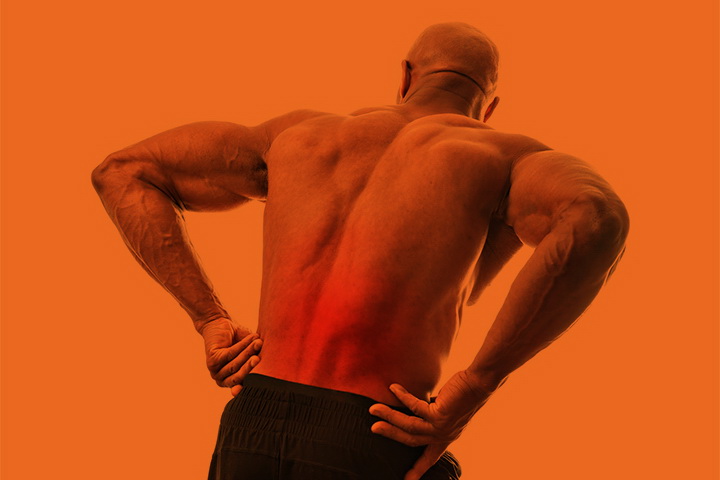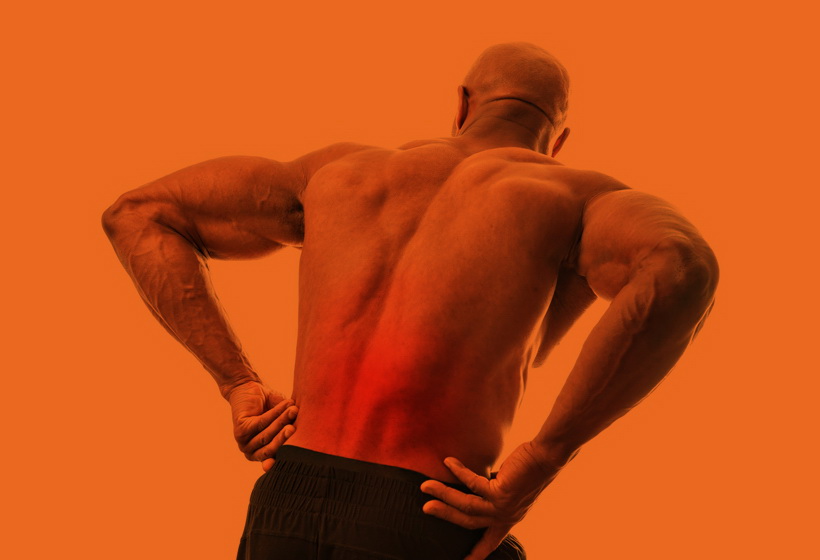
Low back/Hip pain is usually characterized by pain in the lower back or hip area that can radiate down the leg or groin area. Patients may also experience numbness in either leg. Onset of pain may be insidious or can follow after trauma such as a fall on the tailbone or a herniated disc. Vertebral discs are shock absorbers filled with jelly that cushion each vertebrae in the spine and can herniate or degenerate, which can cause neural symptoms from the affected nerve root. Constant compression at this segment can cause radiating pain or numbness in lower back or down the leg.
Piriformis is a muscle in the hip joint that acts as an external rotator for the hip but changes function into an internal rotator at 90 degrees of hip flexion. This muscle lies on top of the sciatic nerve and when in spasm can create sciatica.
▸ Dull ache in lower back
▸ Pain in hip/groin
▸ Pain down lateral side of quad down to knee
▸ Increased pain in buttocks into lower back when sitting or standing for prolonged periods
▸ Numbness down leg
▸ Weakness in foot
Our approach to pain in the lower back or pelvic region is to always correct pelvic malalignment first. The spine sits on the sacrum, which is the centerpiece of the pelvis and therefore reacts to what the pelvis is doing. The pelvis is made up of the ilium on each side and the sacrum in the middle.
Common pelvic malalignments that we fix are pelvic up slips, anterior/posterior rotations, in flare/out flare as well as sacral torsions. Since structure will always dictate function in the body, we believe that a stable and neutral mobile pelvis is the foundation in building a pain free back. Common muscle imbalances that can perpetuate the problem are lower crossed syndrome.
Lower back pain must be assessed post-pelvic alignment. Orthopaedic assessment may elicit certain common issues that arise such as hypo-mobile segments, facet joint sprain/irritation, and disc herniation. In our treatments both the Lumbar and Pelvic region must be addressed altogether as well as the cervical thoracic region.

Low back/Hip pain is usually characterized by pain in the lower back or hip area that can radiate down the leg or groin area. Patients may also experience numbness in either leg. Onset of pain may be insidious or can follow after trauma such as a fall on the tailbone or a herniated disc. Vertebral discs are shock absorbers filled with jelly that cushion each vertebrae in the spine and can herniate or degenerate, which can cause neural symptoms from the affected nerve root. Constant compression at this segment can cause radiating pain or numbness in lower back or down the leg.
Piriformis is a muscle in the hip joint that acts as an external rotator for the hip but changes function into an internal rotator at 90 degrees of hip flexion. This muscle lies on top of the sciatic nerve and when in spasm can create sciatica.
- Dull ache in lower back
- Pain in hip/groin
- Pain down lateral side of quad down to knee
- Increased pain in buttocks into lower back when sitting or standing for prolonged periods
- Numbness down leg
- Weakness in foot
Our approach to pain in the lower back or pelvic region is to always correct pelvic malalignment first. The spine sits on the sacrum, which is the centerpiece of the pelvis and therefore reacts to what the pelvis is doing. The pelvis is made up of the ilium on each side and the sacrum in the middle.
Common pelvic malalignments that we fix are pelvic up slips, anterior/posterior rotations, in flare/out flare as well as sacral torsions. Since structure will always dictate function in the body, we believe that a stable and neutral mobile pelvis is the foundation in building a pain free back. Common muscle imbalances that can perpetuate the problem are lower crossed syndrome.
Lower back pain must be assessed post-pelvic alignment. Orthopaedic assessment may elicit certain common issues that arise such as hypo-mobile segments, facet joint sprain/irritation, and disc herniation. In our treatments both the Lumbar and Pelvic region must be addressed altogether as well as the cervical thoracic region.

Low back/Hip pain is usually characterized by pain in the lower back or hip area that can radiate down the leg or groin area. Patients may also experience numbness in either leg. Onset of pain may be insidious or can follow after trauma such as a fall on the tailbone or a herniated disc. Vertebral discs are shock absorbers filled with jelly that cushion each vertebrae in the spine and can herniate or degenerate, which can cause neural symptoms from the affected nerve root. Constant compression at this segment can cause radiating pain or numbness in lower back or down the leg.
Piriformis is a muscle in the hip joint that acts as an external rotator for the hip but changes function into an internal rotator at 90 degrees of hip flexion. This muscle lies on top of the sciatic nerve and when in spasm can create sciatica.
- Dull ache in lower back
- Pain in hip/groin
- Pain down lateral side of quad down to knee
- Increased pain in buttocks into lower back when sitting or standing for prolonged periods
- Numbness down leg
- Weakness in foot
Our approach to pain in the lower back or pelvic region is to always correct pelvic malalignment first. The spine sits on the sacrum, which is the centerpiece of the pelvis and therefore reacts to what the pelvis is doing. The pelvis is made up of the ilium on each side and the sacrum in the middle.
Common pelvic malalignments that we fix are pelvic up slips, anterior/posterior rotations, in flare/out flare as well as sacral torsions. Since structure will always dictate function in the body, we believe that a stable and neutral mobile pelvis is the foundation in building a pain free back. Common muscle imbalances that can perpetuate the problem are lower crossed syndrome.
Lower back pain must be assessed post-pelvic alignment. Orthopaedic assessment may elicit certain common issues that arise such as hypo-mobile segments, facet joint sprain/irritation, and disc herniation. In our treatments both the Lumbar and Pelvic region must be addressed altogether as well as the cervical thoracic region.

Low back/Hip pain is usually characterized by pain in the lower back or hip area that can radiate down the leg or groin area. Patients may also experience numbness in either leg. Onset of pain may be insidious or can follow after trauma such as a fall on the tailbone or a herniated disc. Vertebral discs are shock absorbers filled with jelly that cushion each vertebrae in the spine and can herniate or degenerate, which can cause neural symptoms from the affected nerve root. Constant compression at this segment can cause radiating pain or numbness in lower back or down the leg.
Piriformis is a muscle in the hip joint that acts as an external rotator for the hip but changes function into an internal rotator at 90 degrees of hip flexion. This muscle lies on top of the sciatic nerve and when in spasm can create sciatica.
- Dull ache in lower back
- Pain in hip/groin
- Pain down lateral side of quad down to knee
- Increased pain in buttocks into lower back when sitting or standing for prolonged periods
- Numbness down leg
- Weakness in foot
Our approach to pain in the lower back or pelvic region is to always correct pelvic malalignment first. The spine sits on the sacrum, which is the centerpiece of the pelvis and therefore reacts to what the pelvis is doing. The pelvis is made up of the ilium on each side and the sacrum in the middle.
Common pelvic malalignments that we fix are pelvic up slips, anterior/posterior rotations, in flare/out flare as well as sacral torsions. Since structure will always dictate function in the body, we believe that a stable and neutral mobile pelvis is the foundation in building a pain free back. Common muscle imbalances that can perpetuate the problem are lower crossed syndrome.
Lower back pain must be assessed post-pelvic alignment. Orthopaedic assessment may elicit certain common issues that arise such as hypo-mobile segments, facet joint sprain/irritation, and disc herniation. In our treatments both the Lumbar and Pelvic region must be addressed altogether as well as the cervical thoracic region.
© Copyright Evolution Sport Therapy 2025.
Newsletter Signup
Sign up for our newsletter to receive all the latest!
Newsletter Signup
Sign up for our newsletter to receive all the latest!
© Copyright Evolution Sport Therapy 2025.
Newsletter Signup
Sign up for our newsletter to receive all the latest!
© Copyright Evolution Sport Therapy 2025.